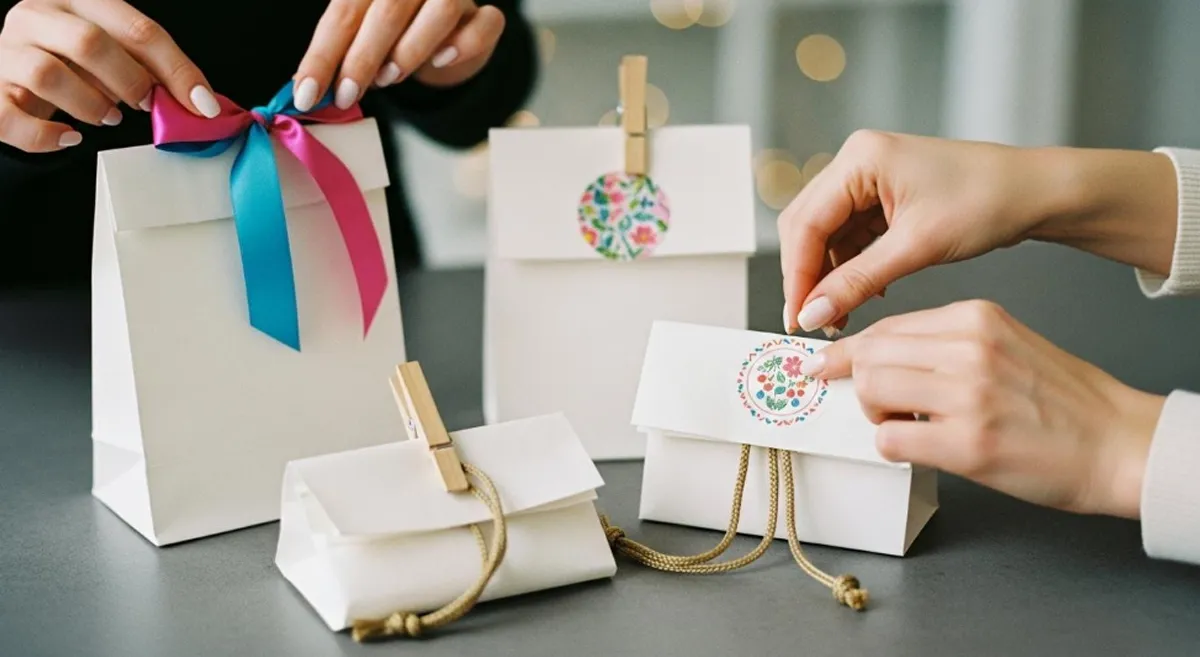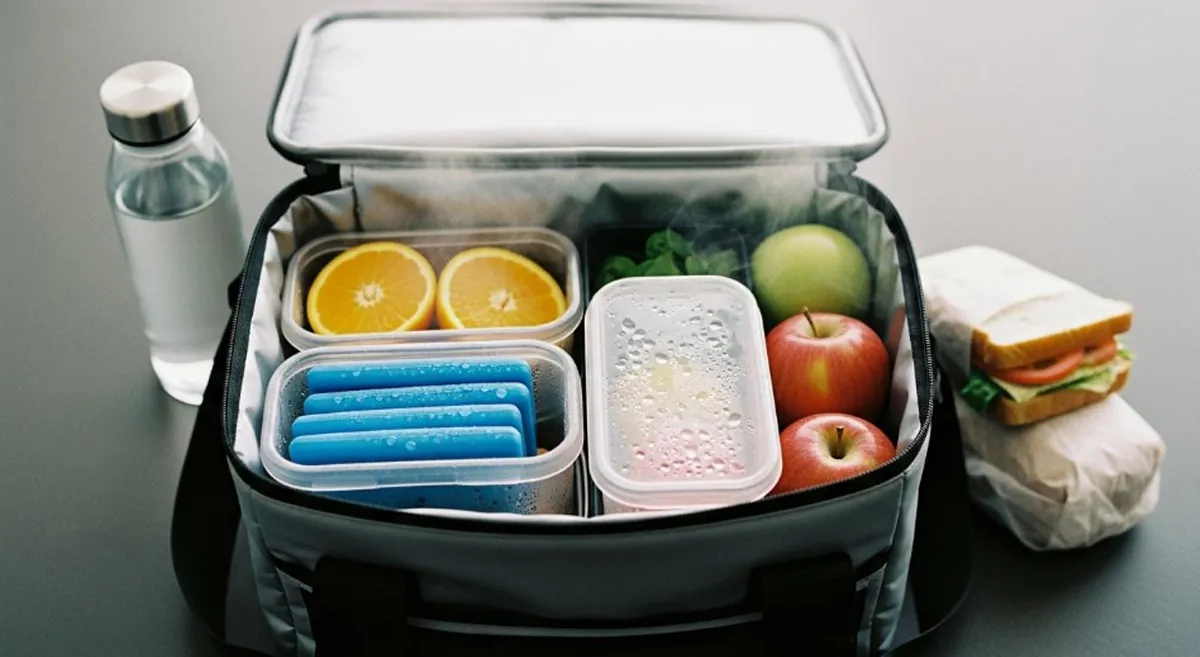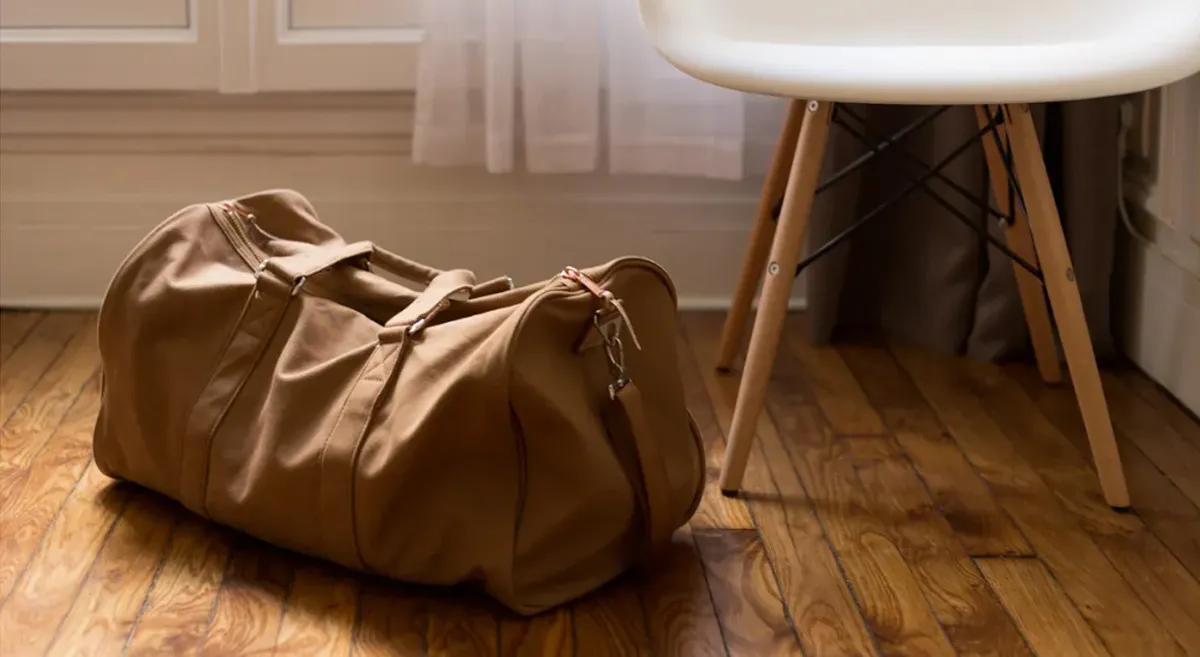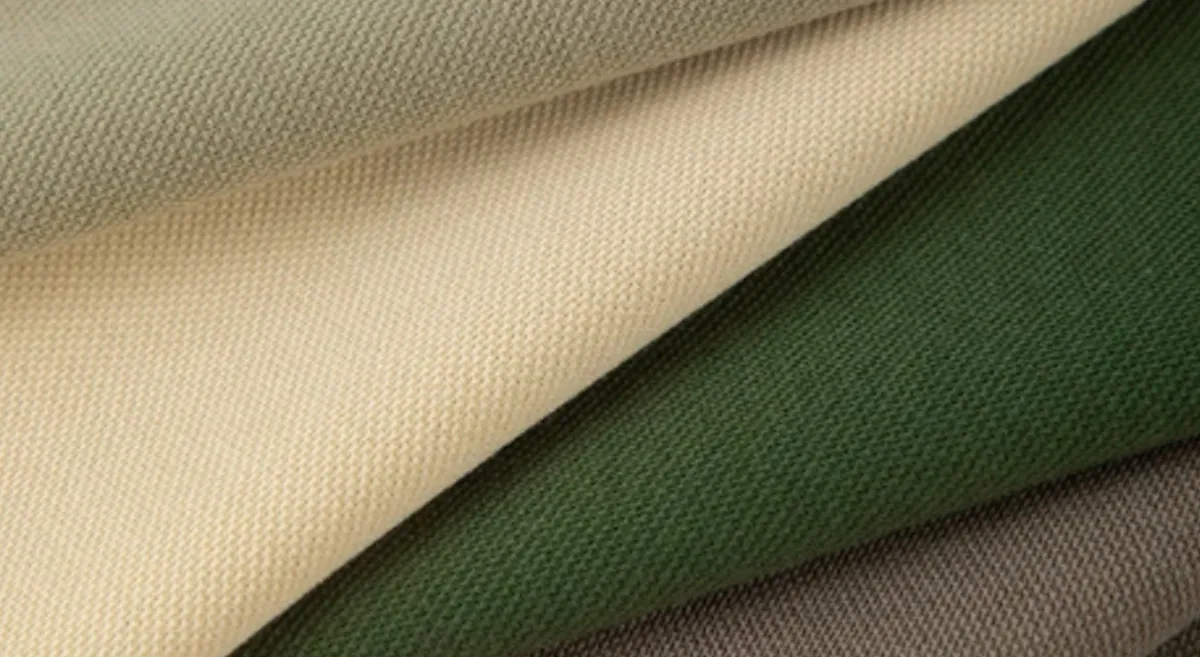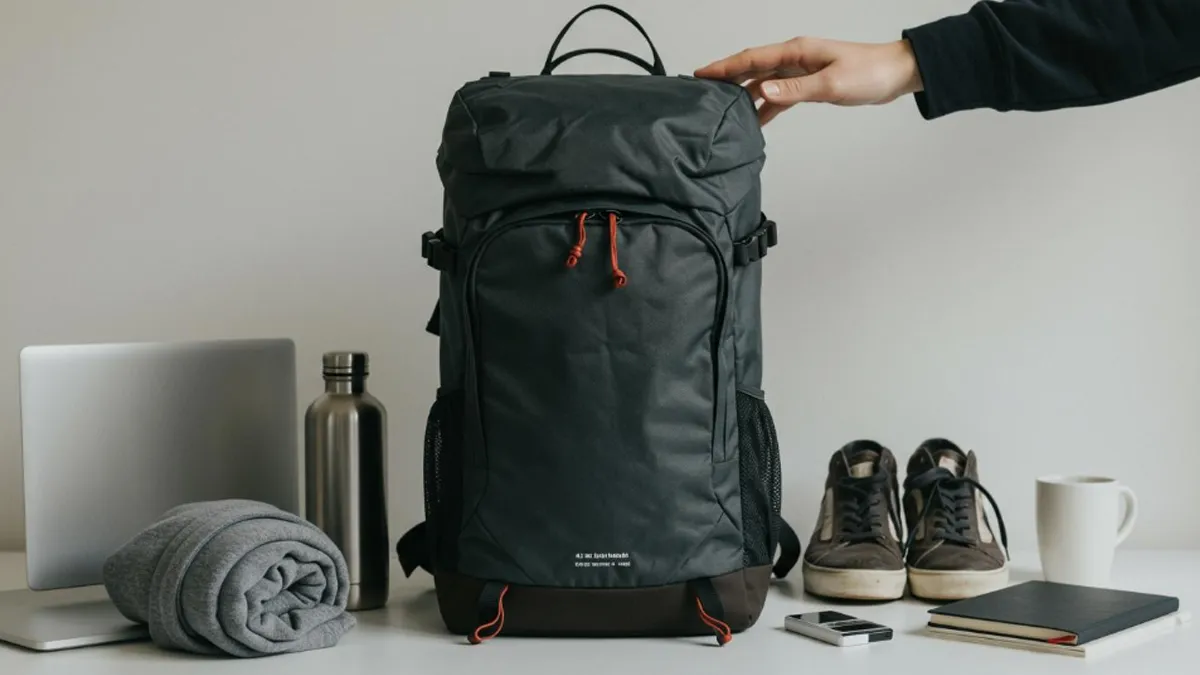
You might wonder how big is a 25 liter backpack when shopping for your next everyday bag. The answer is simple. Most models measure between 17 to 19 inches tall, 11 to 13 inches wide, and 6 to 9 inches deep. Take a look at the table below for a quick size overview:
| Dimension (H x W x D) | Weight Range |
|---|---|
| 17-19 in x 11-13 in x 6-9 in | 1.0–1.3 kg |
When you ask yourself how big is a 25 liter backpack, picture a school backpack or a bag that fits easily under an airplane seat. You can grab a Nayo Smart Herman Pro for personal items on budget airlines or choose a Westover Hybrid Backpack for travel. So, how big is a 25 liter backpack? It’s just right for daily use, not too bulky, and easy to carry. If you’re curious about how big is a 25 liter backpack for your commute or short trips, you’ll find it fits the essentials without feeling oversized. Wondering how big is a 25 liter backpack compared to larger bags? You’ll see it’s perfect for light packers.
Key Takeaways
- A 25L backpack is usually 17-19 inches tall. It is 11-13 inches wide and 6-9 inches deep. This size is great for daily use.
- You can fit a 15-inch laptop in this backpack. It also holds textbooks, a lunchbox, and other daily items. It does not feel too big or heavy.
- A 25L backpack weighs about 1.0 to 1.3 kg. This keeps it light and easy to carry all day.
- A 25L backpack works well for short trips. It fits under airplane seats. You can pack clothes, toiletries, and travel items inside.
- For day hikes, a 25L backpack has enough space. You can bring snacks, water, a rain jacket, and a first-aid kit. This makes it a good choice for many uses.
- When you compare sizes, a 25L backpack has more space than a 20L. It is lighter and easier to handle than a 30L. This makes it a good middle choice for most people.
- To use space well, organize your things by how often you use them. Packing cubes can help keep your items neat and easy to find.
- Picking the right backpack size depends on what you do and how you pack. A 25L backpack is great for daily use. Bigger backpacks are better for longer trips.
How Big is a 25 Liter Backpack
Typical Dimensions
Height, Width, Depth
When you look at a 25 liter backpack, you will notice that the dimensions make it perfect for daily use. Most 25L backpacks measure between 17 and 19 inches in height. The width usually falls between 11 and 13 inches. The depth ranges from 6 to 9 inches. These dimensions help you fit your backpack under an airplane seat or in a school locker.
Here are some real-world examples of 25L backpack dimensions:
- 18.8″ x 11″ x 5.9″ (48 cm x 28 cm x 15 cm)
- 17″ x 13″ x 7″ (43 cm x 33 cm x 18 cm)
- 48.5 cm x 28 cm x 15 cm
You can see that the dimensions do not change much from one brand to another. This size gives you enough space for your daily essentials without making the backpack feel bulky. If you compare these dimensions to a typical school backpack, you will find them almost the same. You can carry your books, a laptop, and even a lunchbox with ease.
Weight Range
The weight of a 25 liter backpack depends on the materials and design. Most empty backpacks in this size range weigh between 22.6 ounces (about 1.4 pounds) and 1.86 pounds (0.84 kg). Some ultralight models, like the Bagger Ultra 25L, weigh as little as 5.3 ounces (150 grams). Others, such as the UNDA 25L Roll Top Dry Backpack, weigh about 0.9 kg for the bag plus 0.4 kg for the insert.
Here’s a quick look at the weight range for popular 25L backpacks:
| Backpack Name | Weight |
|---|---|
| Bagger Ultra 25L Backpack | 5.3 oz / 150.0 g |
| UNDA 25L Roll Top Dry Backpack | 0.9 kg (bag) + 0.4 kg (insert) |
You will find that most 25L backpacks feel light when empty. This makes them easy to carry all day, even when you fill them with your daily gear. The weight is similar to a small laptop or a large water bottle.
Size Comparison
You might wonder how a 25 liter backpack compares to other sizes. Let’s look at a simple table to help you see the difference in what you can fit inside:
| Backpack Size | What Fits Inside | Best Used For |
|---|---|---|
| 20L | Large headphones, small book, 2 hoodies, water bottle, 2 binders, up to 15” laptop | School, camera, work, gym |
| 25L | Large headphones, water bottle, small book, 2 hoodies, DSLR camera insert, 2 binders, up to 15” laptop | School, camera, work, gym |
| 30L | Large headphones, water bottle, small book, 2 hoodies, DSLR camera insert, large textbook, 2 binders, up to 15” laptop | Extra large school, travel, large laptops |
A 25L backpack gives you more room than a 20L, so you can add a camera insert or extra clothes. It is not as big as a 30L, which can hold a large textbook or more travel gear. You will find that the 25L size is a sweet spot for most people. It is big enough for daily use but not too large to carry comfortably.
Tip: If you want a backpack that fits under an airplane seat, a 25L backpack is a safe choice. You can use it for school, work, or travel without worrying about space or weight.
When you think about backpack size and liters, remember that 25 liters is just right for most daily needs. The dimensions make it easy to organize your things, and the weight keeps your load light. You can use a 25L backpack for commuting, school, or even a short trip. If you need more space, you might look at a 30L or even ask, “how big is a 40 liter backpack?” For now, a 25L backpack gives you the perfect balance of size, weight, and function.
25L Backpack Capacity
What Fits Inside
Daily Essentials
You might wonder what you can actually fit inside a 25L backpack. The answer is, quite a lot! This size gives you enough internal usable space for your daily routine. You can easily pack:
- A 15-inch laptop
- Two or three textbooks or notebooks
- A lunchbox
- A water bottle
- Headphones
- A light jacket or hoodie
- A pencil case and small tech gear
Many backpacks in this range come with smart compartments and pockets. These features help you organize your items and make the most of the capacity. You will find that the right internal organization lets you grab what you need quickly. For example, a padded laptop sleeve keeps your computer safe, while side pockets hold your water bottle or umbrella.
Tip: If you like to keep things tidy, look for a backpack with several compartments. This makes it easier to separate your gym clothes from your books or electronics.
Travel Items
A 25L backpack also works well for short trips or as a carry-on. You can pack:
- A change of clothes
- Toiletries in a small pouch
- Travel documents and wallet
- A compact camera
- Snacks and a reusable water bottle
- Chargers and cables
You will notice that the dimensions of a 25L backpack allow you to fit it under most airplane seats. This makes it a great choice for flights or train rides. You can keep your essentials close and avoid checking extra bags.
Here’s a quick table to show how internal organization affects what you can carry:
| Feature | Impact on Carrying Capacity |
|---|---|
| Internal Organization | Lets you store and access items efficiently |
| Compartments and Pockets | Helps with weight balance and quick retrieval |
| Capacity Measurement | Shows how much you can carry comfortably |
| Suitable Scenarios | Great for weekend trips, light travel, city use |
| Typical Items | Holds essentials, clothes, and gear without bulk |
Daypack Use
A 25L backpack shines as a daypack. You get enough capacity for most activities without feeling weighed down. Here are some ways you might use it:
- Commuting: Carry your laptop, lunch, and a few extras to work or school.
- Gym: Pack a change of clothes, shoes, and a towel. Some models, like the Mammut Seon Transporter 25, even have separate spaces for gym gear and work items.
- Hiking: Bring snacks, a water bottle, a rain jacket, and a first-aid kit. Most hikers find 20-30 liters perfect for day hikes.
- Travel: Use it as your main bag for a weekend getaway or as a personal item on a plane.
You will find that a 25L backpack offers the sweet spot between space and comfort. It gives you enough room for essentials but stays compact. The capacity works well for most day trips, commutes, and short excursions. You can organize your gear, keep things accessible, and avoid carrying extra weight.
Note: If you need to carry bulky gear or pack for longer trips, you might want to check out how big is a 40 liter backpack. For daily use, though, 25 liters usually covers all your needs.
25L vs Other Sizes
20L vs 25L
When you look at backpack sizes, you might wonder if 20 liters is enough or if you should go for 25 liters. A 20L backpack feels compact and lightweight. You can carry your basics, like a tablet, a water bottle, and a couple of books. This size works well for quick errands, a light school day, or a short walk in the park.
A 25L backpack gives you a bit more room. You can fit a 15-inch laptop, a lunchbox, and even a light jacket. The extra space helps if you want to add gym clothes or a camera. You will notice the difference when you need to pack for a busy day. If you like to keep things organized, the extra five liters make a big impact. Many people find that 25L hits the sweet spot for daily use.
If you often find yourself wishing for just a little more space, moving up from 20L to 25L can make your day much easier.
25L vs 30L
Now, let’s compare 25L and 30L backpack sizes. A 30L backpack gives you more flexibility. You can pack extra clothes, a pair of shoes, and maybe even a small blanket. This size works well for overnight trips or when you need to carry more gear for sports or hobbies.
A 25L backpack still covers most daily needs. You can use it for school, work, or a day trip. The smaller size feels lighter on your back and fits better under airplane seats. If you want to avoid carrying extra weight, 25L is a smart choice. But if you often pack bulky items, you might prefer the extra space in a 30L bag.
Here’s a quick table to help you compare:
| Backpack Size | Best For | Typical Dimensions (inches) |
|---|---|---|
| 25L | Daily use, commuting, short trips | 18 x 12 x 7 |
| 30L | Overnight trips, sports, extra gear | 20 x 13 x 8 |
25L vs 40L
When you start looking at larger backpack sizes, the jump from 25L to 40L feels huge. A 25L backpack is perfect for minimalist packers and short adventures. You can use it for a day hike, a city tour, or as your main carry-on for a weekend getaway. The compact size keeps your load light and easy to manage.
A 40L backpack changes the game. You get enough space for longer trips, extra clothes, and even some travel gear. This size works best if you plan to be away for several days or need to carry more equipment. Many travelers choose 40L for extended journeys or when they want to avoid checked luggage.
- 25L backpack: Great for short trips, light packing, and daily use.
- 40L backpack: Ideal for longer travel, more gear, and extra comfort on the road.
Not sure how big is a 40 liter backpack? Picture a bag that can hold almost twice as much as a 25L. You can fit several changes of clothes, shoes, and even a small sleeping bag.
When you compare backpack sizes, think about your needs. If you want to keep things simple and easy to carry, 25L is a solid choice. If you need more space for longer adventures, 40L might be the better fit.
Choosing the Right Size
Picking the right backpack size can feel tricky, but you can make it simple by thinking about your daily routine and what you need to carry. Not every day looks the same, so your perfect fit depends on your activities, how you like to pack, and even your comfort level.
Here are some questions to help you decide:
- How long will you be out?
- Do you pack light or bring extras just in case?
- Will you carry heavy gear or just the basics?
- Do you have any back or shoulder issues?
- Are you planning a short trip, a day at school, or a weekend away?
You can use these questions to match your needs to the most suitable backpack sizes. Take a look at this table for a quick guide:
| Activity Type | Suggested Backpack Sizes | Why It Works |
|---|---|---|
| School/Work | 20L–25L | Fits books, laptop, lunch, and more |
| Day Hike/City Tour | 20L–30L | Room for snacks, jacket, water |
| Overnight Trip | 30L–40L | Space for clothes, toiletries |
| Multi-Day Adventure | 40L+ | Holds gear, food, extra clothes |
You might notice that backpack sizes overlap for many activities. That’s because everyone packs differently. Some people like to keep things minimal, while others want to be ready for anything. If you prefer to travel light, a smaller size works well. If you like to bring extra gear, you might want to size up.
Tip: Try packing your usual items into a bag you already own. This helps you see if you need more or less space before you buy a new backpack.
Physical comfort matters, too. If you have back or shoulder pain, a smaller and lighter backpack can make a big difference. You should also think about the quality of your gear. Lightweight, compact items let you use smaller backpack sizes without feeling cramped.
Packing style plays a big role. Minimalists often choose smaller backpack sizes, while heavy packers go bigger. The length of your outing also matters. A few hours in the city needs less space than a weekend in the mountains.
If you ever wonder, “how big is a 40 liter backpack,” just remember it’s almost double the size of a 25L. That means you can fit a lot more, but it might feel bulky for daily use.
Choosing the right backpack size is all about matching your needs to your lifestyle. Think about your activities, comfort, and packing habits. When you find the right fit, carrying your gear feels easy and stress-free.
Measuring a Backpack
How to Measure
You might want to know how much your backpack can hold before you buy it. Measuring a backpack is easier than you think. You can use a few simple methods at home.
- Fill your backpack with small pellets or beans. Make sure you fill every corner. Then, pour the pellets into a measuring cup to see how many liters they take up.
- Try using rice or beans. If you have a measuring cup that holds one liter, count how many cups it takes to fill your backpack. If you use 25 cups, your backpack holds 25 liters.
- You can also measure the height, width, and depth of your backpack. Multiply these numbers to get the volume. This method gives you a rough idea, but it might not be exact because backpacks have odd shapes and pockets.
Tip: If you want to compare your backpack to others, use the pellet or measuring cup method. This gives you a more accurate result than just using dimensions.
Understanding Specs
When you look at backpack listings online, you will see lots of numbers and details. Manufacturers usually show the dimensions, weight, and material. Here’s a sample table you might find:
| Dimension | Value |
|---|---|
| Body size | 18″ x 13″ x 7″ |
| Weight | 1.43 lbs |
| Material | Recycled PET Polyester |
You should check these specs before you buy. The dimensions tell you how much space you have inside. The weight helps you know if the backpack will feel heavy when empty. The material shows how strong and water-resistant the backpack is.
If you want to know how big is a 40 liter backpack, just remember it will be almost twice as large as a 25L. You can use the same measuring tricks to compare sizes at home.
Note: Always look for clear specs when shopping. If you see the volume listed in liters, you can use the measuring cup method to picture how much you can pack.
Measuring your backpack helps you pick the right size for your needs. You can use these easy methods to check if your bag fits your daily essentials or travel gear. Next time you shop, you’ll know exactly what those numbers mean.
Is 25L Right for You
Best Uses
Daily Use
You probably want a bag that fits your routine. A 25L backpack works well for school, work, or running errands. You can pack your laptop, a few books, a lunchbox, and a water bottle. The medium size makes it easy to carry on your back without feeling heavy. You get enough space for your essentials, but you don’t have to worry about the bag being too bulky. Many people choose this size because it balances capacity and portability. You can slip it under your desk or into a locker with no trouble.
Travel
If you travel often, you know how important it is to have a bag that fits under an airplane seat. The dimensions of a 25L backpack make it perfect for short trips or as a carry-on. You can pack a change of clothes, toiletries, travel documents, and snacks. You don’t need to check extra luggage for a weekend getaway. This size is popular with travelers who want to keep things simple and organized. You can move easily through airports and train stations.
Hiking
Planning a day hike? A 25L backpack gives you enough room for snacks, a rain jacket, a first-aid kit, and a water bottle. You can also fit a camera or binoculars if you like to explore nature. Most hikers find this size perfect for day trips. You don’t have to carry extra weight, and you can keep your gear organized. If you hike in winter or need to bring bulky gear, you might want a larger bag. For most day hikes, though, 25L is just right.
Tip: If you want a bag for daily use, travel, or hiking, a 25L backpack is a smart choice. You get the best mix of space and comfort.
Who Needs More or Less
Some people need a bigger or smaller bag, depending on their activities. Here are a few reasons you might choose a different size:
- Winter hikers often need a larger backpack (35-40 liters) for snowshoes, insulated clothing, and extra gear.
- Daypacks under 25 liters usually don’t work for overnight trips because you need space for a sleeping bag and cooking equipment.
- Smaller backpacks often lack hip belts, which help you carry heavier loads (over 20 pounds) more comfortably.
If you pack light and only need your daily essentials, a smaller bag might work. If you plan longer trips or carry heavy gear, you should look at bigger options. Always think about what you need to carry and how far you’ll go. The right size makes your journey easier and more enjoyable.
| Backpack Size | Best For | Not Ideal For |
|---|---|---|
| Under 25L | Quick errands, light school days | Overnight trips, heavy loads |
| 25L | Daily use, travel, day hikes | Bulky winter gear, multi-day hikes |
| 35-40L | Winter hiking, overnight trips | Everyday commuting |
Note: If you ever wonder how big is a 40 liter backpack, just remember it’s almost double the space of a 25L. You can fit much more, but it may feel bulky for daily use.
Choosing the right backpack depends on your needs. Think about your routine, your gear, and how much you want to carry. You’ll find that a 25L backpack fits most situations, but it’s always good to check if you need more or less space.
Packing Tips
Organization
Packing a 25 liter backpack can feel like a puzzle, but you can make it simple with a few smart strategies. Start with a clean and empty backpack. This helps you avoid clutter and makes it easier to see what you have. Next, organize your items by how often you use them. Place things you reach for often, like your phone or snacks, in easy-to-access pockets. Use cases or built-in pockets to keep small items, like chargers or pens, from getting lost at the bottom.
You can also use packing cubes or stuff sacks. Packing cubes keep your belongings neat and make it easy to find what you need. They work especially well for small items, like socks or toiletries. You can even color-code your cubes for quick access. Stuff sacks help you fit odd-shaped items into corners, making the most of every inch.
Here’s a quick checklist to keep your backpack organized:
- Start with an empty bag.
- Group items by how often you use them.
- Use pockets and cases for loose items.
- Try packing cubes or stuff sacks for extra organization.
Tip: Packing cubes not only keep things tidy, but they also help you use all the available space. You’ll spend less time digging for your gear and more time enjoying your day.
Maximizing Space
You want to fit as much as possible without making your backpack feel stuffed. The best way to do this is to pack smart and think about weight distribution. Begin by packing your insulation, like a jacket or sweater, at the bottom. This fills up the corners and gives you a soft base. Place heavier items, such as a laptop or books, on top of the insulation and close to your back. This keeps the weight centered and makes your load feel lighter.
Limit your shoes to one or two pairs. Shoes take up a lot of space, so choose the most versatile ones. Pack three days’ worth of clothes that you can mix and match. Bring the smallest version of your toiletries to save room. If you use drawstring stuff sacks, you can squeeze smaller items into tight spaces.
Packing cubes help you pack like a pro. They let you stack and arrange your clothes in a tetris-like way, so you use every bit of space. You can also compress your clothes to make them even smaller.
Our packing cubes are designed to fully utilize all available space; maximizing your carrying potential. Made out of lightweight and durable Dyneema® Composite Fabric, these cubes feature a wrap around webbing closure and compression system that ensures that your clothing and gear take up the minimal amount possible.
When you pack, always think about balance. Place the heaviest items in the middle of the backpack, close to your body. This helps you stay comfortable, especially if you plan to walk or hike. Avoid putting heavy things on the outside or top, as this can make your bag feel off-balance.
Here’s a table to help you remember the best packing order:
| Packing Step | What to Pack | Why It Works |
|---|---|---|
| Bottom | Insulation (jacket, sweater) | Fills corners, soft base |
| Middle (close to back) | Heavy items (laptop, books) | Keeps weight centered |
| Sides & Gaps | Small items in stuff sacks | Uses all available space |
| Top & Outer Pockets | Frequently used items | Easy access |
By following these tips, you can make the most of your backpack’s dimensions and carry everything you need for your next adventure.
Conclusion
You now know a 25L backpack gives you the perfect balance for daily use, day hikes, and short trips. Most people find this size holds all the essentials without feeling bulky. If you need more space for overnight or cold-weather adventures, consider a larger pack. Always check real dimensions, not just the listed volume.
- For business needs, look for strong materials, quality zippers, and reliable suppliers.
- Custom options let you match your brand and style.
Ready to create your own custom backpacks? Reach out and let’s design the perfect solution for your business!
FAQ
How big is a 25 liter backpack in inches?
Most 25L backpacks measure about 18 inches tall, 12 inches wide, and 7 inches deep. You can picture it as the size of a regular school backpack. It fits under most airplane seats and in lockers.
Can a 25L backpack fit a 15-inch laptop?
Yes, you can fit a 15-inch laptop in most 25L backpacks. Many have padded sleeves for laptops. Always check the backpack’s laptop compartment size before you buy.
Is a 25L backpack good for travel?
You can use a 25L backpack for short trips or as a carry-on. It holds clothes, toiletries, and travel essentials. It fits under airplane seats, so you can keep your things close.
What can I pack in a 25L backpack for a day hike?
You can pack snacks, a water bottle, a rain jacket, a first-aid kit, and a camera. There’s also room for a light sweater and some personal items. It’s perfect for day hikes.
How big is a 40 liter backpack compared to 25L?
A 40L backpack is almost twice as big as a 25L. You can pack more clothes, shoes, and gear. If you need space for longer trips, a 40L backpack works better.
Is a 25L backpack too small for school?
No, a 25L backpack works well for school. You can fit books, notebooks, a lunchbox, and a laptop. It’s not too bulky, so you can carry it easily.
Can I use a 25L backpack as a gym bag?
Yes, you can use a 25L backpack for the gym. It fits gym clothes, shoes, a towel, and a water bottle. Some backpacks have special pockets for wet clothes or shoes.
How do I know if a 25L backpack is right for me?
Think about what you carry every day. If you need space for daily essentials, a 25L backpack is a great choice. If you pack lots of gear, you might want a bigger size.

